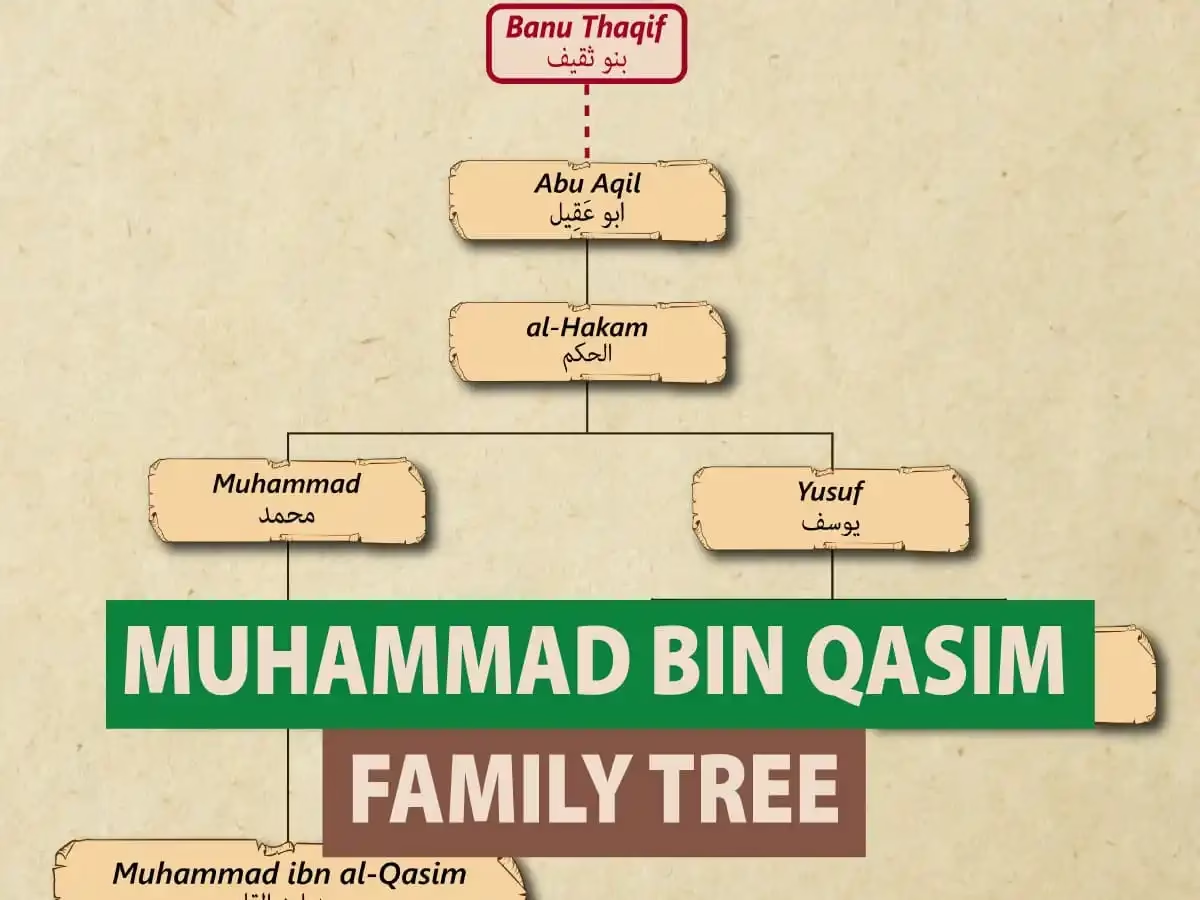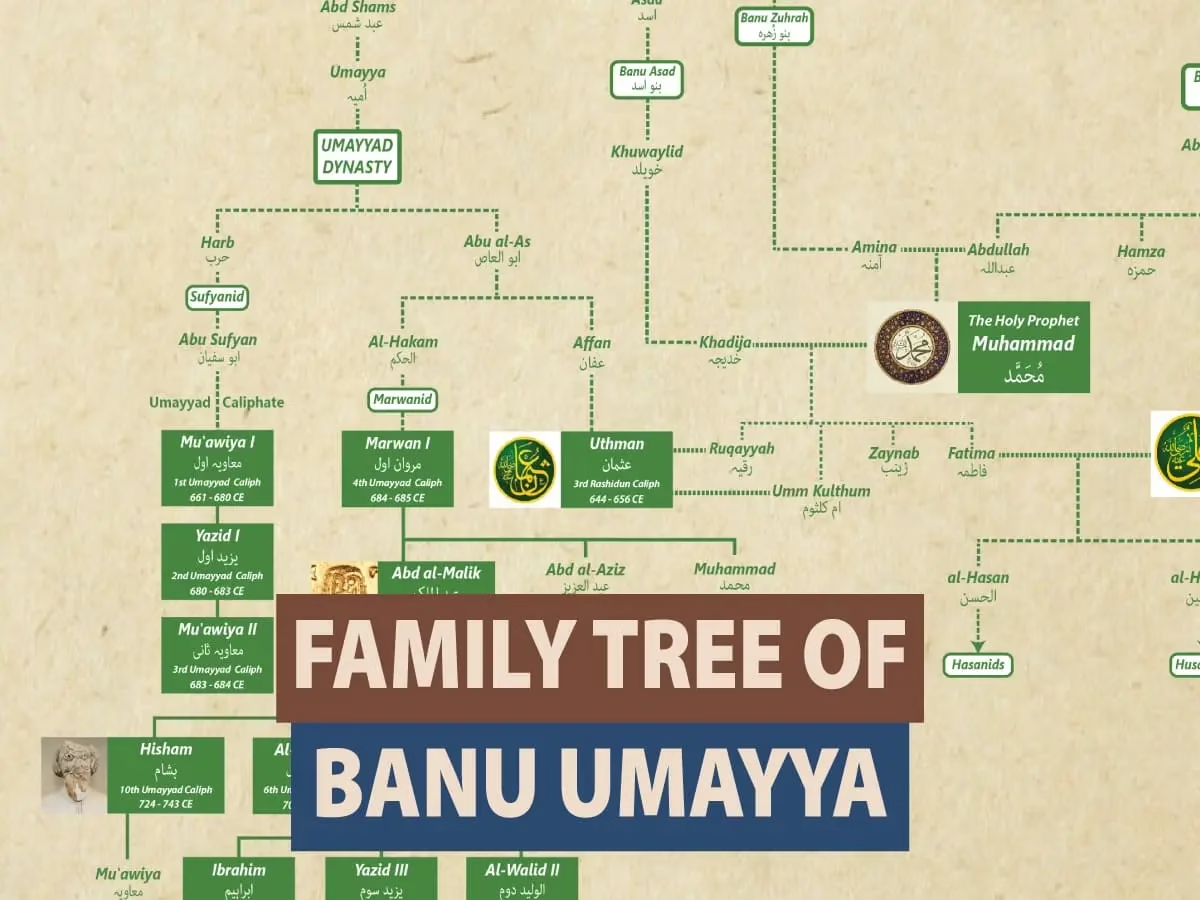The Seljuk Dynasty was a major power in medieval Islamic history, shaping the future of Islamic civilization. They built a vast empire, influencing politics, culture, and military strategy across the Middle East and Central Asia. Their rule strengthened Sunni Islam, supported scientific and architectural advancements, and set the stage for future Islamic empires.
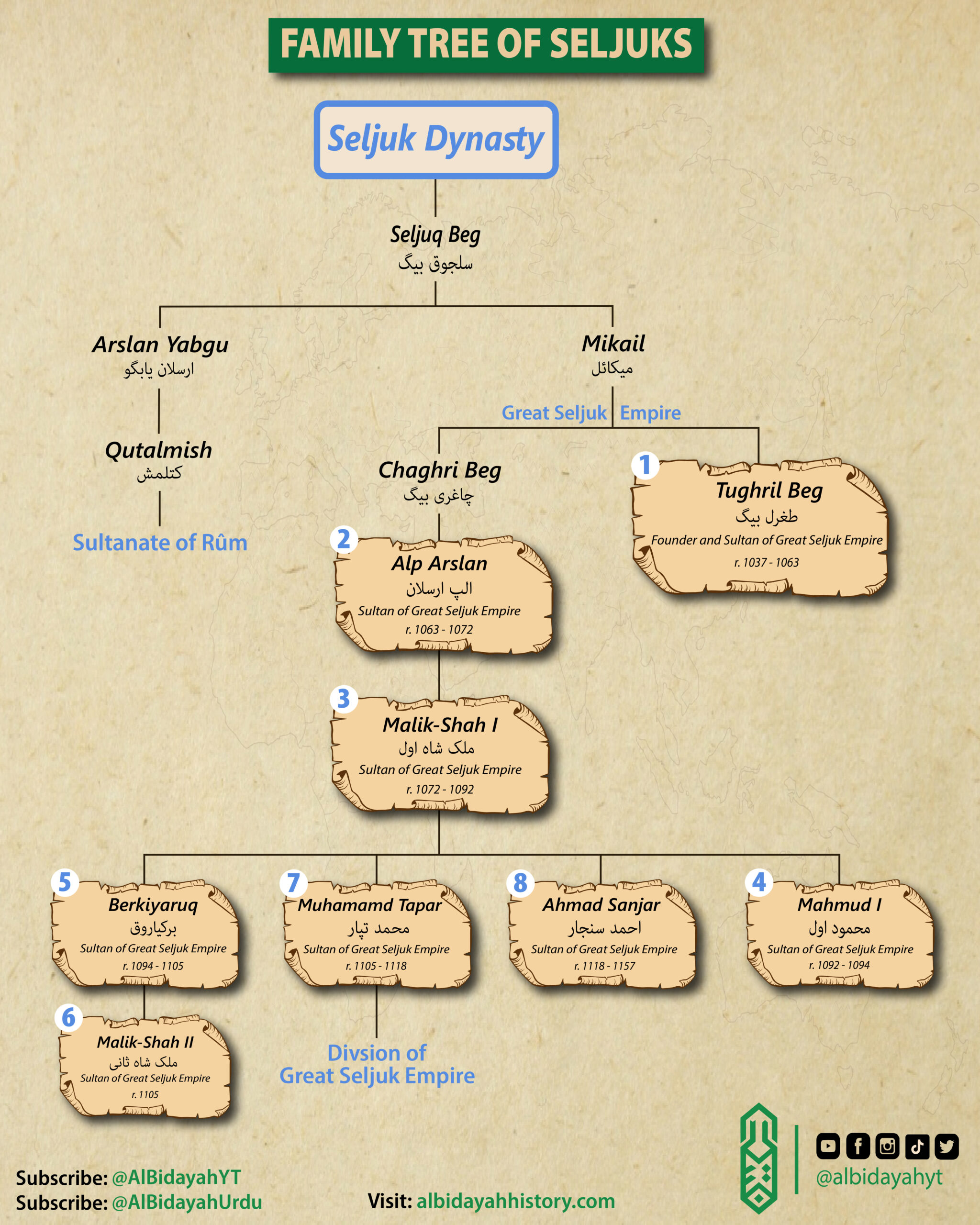
Seljuk Bey: The Founder of the Dynasty
The Seljuk Dynasty was founded by Seljuk, a leader from the Qiniq tribe of the Oghuz Turks. Around 985, he settled near the Syr Darya River in Jend, where his clan converted to Islam. At that time, Khwarezm was under the Samanid Empire, but by 999, the Samanids collapsed. The Kara-Khanids took over Transoxiana, while the Ghaznavids ruled south of the Amu Darya. The Seljuks first supported the last Samanid Emir but later established their own independent power.
Sons of Seljuk
According to various sources, Seljuk had four or five sons: Isra’il (Israel, Arslan), Mika’il (Michael), Musa (Moses), Yusuf (Joseph) and/or Yunus (Jonah).
Mikail ibn Seljuk
Michael or Mikail ibn Seljuq was killed in a battle while fighting against non-Muslims, Mikail’s legacy is notable through his sons—Tughril Bey and Chaghri Bey—who became the founders of the Great Seljuk Empire.
Arslan Yabgu
Arslan Yabgu was a strong Seljuk leader who defeated the Karakhanids multiple times and supported Ali Tigin in their conflicts. However, in 1025, he faced a powerful alliance between Karakhanid Sultan Yusuf Kadir and Mahmud of Ghazni. To avoid war, he moved his tribe to the deserts.
Mahmud of Ghazni later captured Arslan and his son Qutalmish, possibly through betrayal during peace talks. Arslan was imprisoned in Kalinjar Fort (India), where he remained until his death in 1032. Despite efforts by his nephew, Tughril Bey, to negotiate his release, no agreement was reached.
Sultans of the Great Seljuk Empire
The descendants of Mikail were instrumental in expanding the Seljuk power:
1. Sultan Tughril
Abu Talib Muhammad Tughril ibn Mika’il, better known as Tughril , was a Turkoman chieftain who founded the Seljuk Empire and ruled from 1037 to 1063. He united many Turkoman warriors and led them in conquering Khorasan and eastern Persia. In 1055, he took control of Baghdad, ending Buyid rule and making the Abbasid Caliph a figurehead while commanding the caliphate’s armies. He fought against the Byzantines and Fatimids to expand his empire and strengthen the Islamic world.
Before the Seljuks, Persia was divided by warring powers like the Buyids, Kakuyids, and Ghaznavids, leading to chaos. Under Tughril’s rule, peace and prosperity returned, and the Seljuks adopted Iranian-Muslim culture, reinforcing their authority.
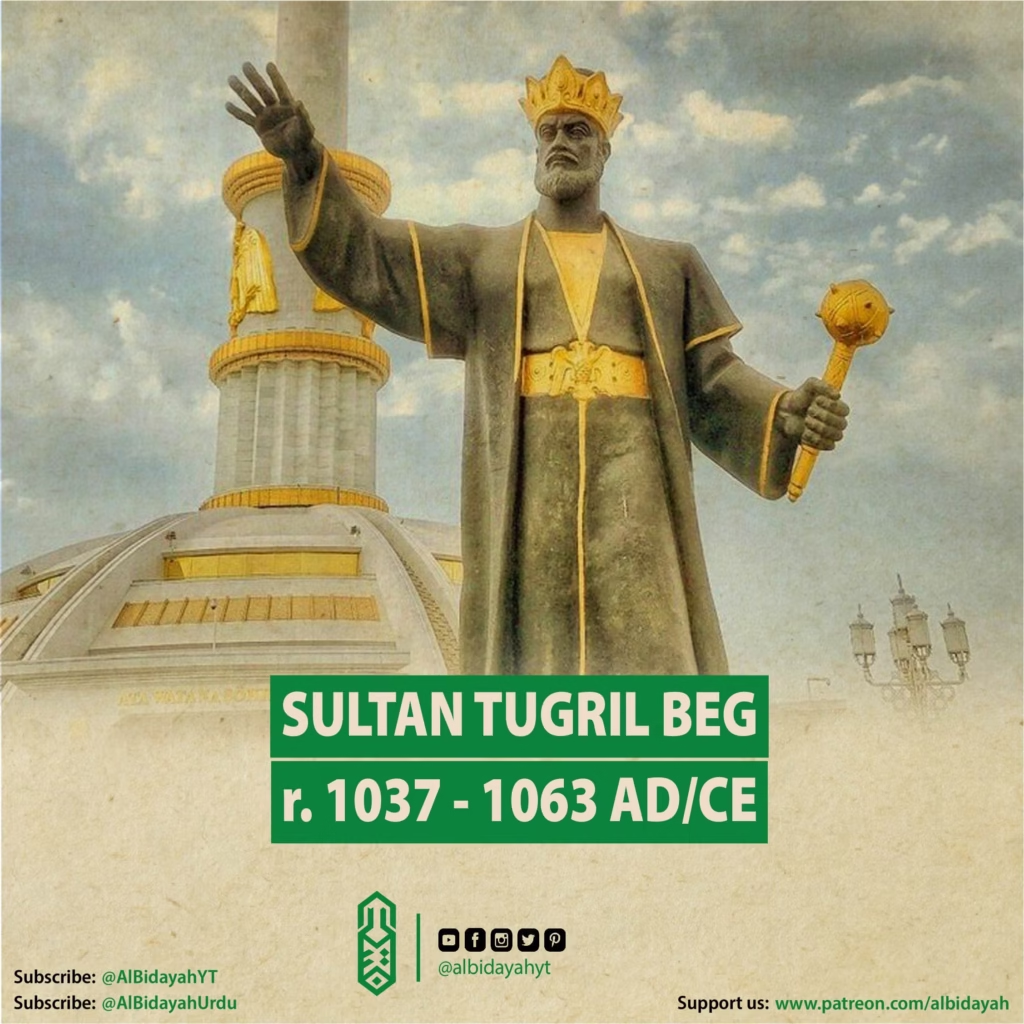
2. Sultan Alp Arslan
Alp Arslan, born Muhammad Alp Arslan bin Dawud Chaghri, was the second sultan of the Seljuk Empire and the great-grandson of Seljuk, the dynasty’s founder. He expanded Seljuk territories, consolidating power by defeating rivals in the south, east, and northwest. His victory over the Byzantines at the Battle of Manzikert or Malazgirt in 1071 paved the way for Turkoman settlement in Anatolia.
Although Tughril had chosen his nephew Suleiman, another son of Chagri Bey, as his successor, Alp Arslan, with the support of powerful military leaders, challenged this decision. After a brief struggle, he emerged victorious and secured the Seljuk throne.
See Also: Sultan Alp Arslan, a Short Biography
3. Sultan Malik-Shah I
Malik-Shah I was the third sultan of the Seljuk Empire (1072–1092) and ruled during its greatest expansion. As a young prince, he joined his father Alp Arslan and vizier Nizam al-Mulk in military campaigns. In 1072, Alp Arslan was fatally wounded, and Malik-Shah became sultan. His rule was challenged by his uncle Qavurt, but he defeated him and secured the throne.
Although Malik-Shah was the nominal ruler, Nizam al-Mulk held great influence over the empire. Malik-Shah focused on defeating the Karakhanids in the east and maintaining order in the Caucasus. The cause of his death in 1092 remains unclear—some say he was poisoned by the Abbasid Caliph al-Muqtadi.
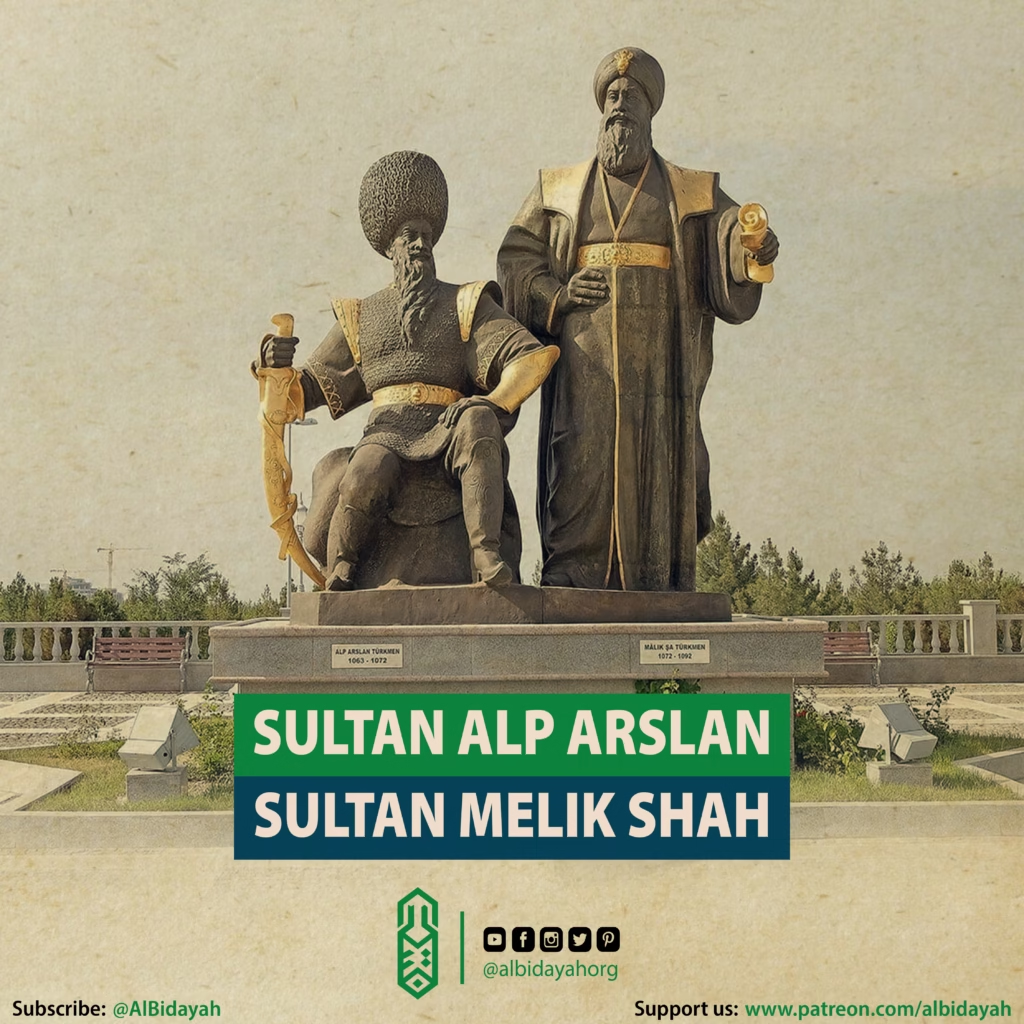
4. Sultan Mahmud I
Mahmud I became sultan of the Seljuk Empire ruled from 1092 to 1094, at just four years old after the death of his father, Malik-Shah I, in 1092. However, real power was held by his mother, Terken Khatun.
His reign saw the fragmentation of the Seljuk Empire, as rival factions fought for control. In 1094, after his forces were defeated at Borujerd, Mahmud and his mother were assassinated by supporters of the former vizier Nizam al-Mulk.
5. Sultan Berkyaruq
Berkyaruq ibn Malik-Shah ruled as the fifth sultan of the Seljuk Empire from 1094 to 1105. He was the son of Malik-Shah I, but his reign was marked by civil wars and power struggles among Seljuk princes.
During his rule, the empire began to break apart, leading to the rise of independent Turkoman atabegates and principalities in Kirman, Anatolia, and Syria. By the time of his death in 1105, his authority had weakened significantly.
6. Sultan Malik-Shah II
Malik-Shah II, son of Berkyaruq, briefly succeeded after his father and was theoretically the head of the dynasty, but was soon killed by Muhammad I Tapar, Berkyaruq’s half-brother and rival.
7. Sultan Muhammad I Tapar
Muhammad I Tapar, son of Malik-Shah I and Taj al-Din Khatun Safariya, ruled the Great Seljuk Empire from 1105 to 1118. He became sultan of Baghdad after succeeding his nephew Malik-Shah II, though his brother Ahmad Sanjar held greater power in Khorasan.
Before becoming sultan, Muhammad struggled for control against his half-brother Berkyaruq. Initially given Armenia and Azerbaijan, he was dissatisfied and rebelled again. However, by 1104, Berkyaruq, weakened by illness and war, agreed to divide the empire. Muhammad became the sole ruler after Berkyaruq’s death in 1105.
See Also: Umayyad Dynasty Family Tree
8. Sultan Ahmad Sanjar
Ahmad Sanjar, son of Malik-Shah I, ruled Khorasan from 1097 to 1118, before becoming Sultan of the Seljuk Empire. His reign was marked by internal revolts and external conflicts. Sanjar defeated invasions from Kashgaria and the Ghurids and fought the Nizari Ismailis, forcing them out of key strongholds. In 1117, he defeated Ghaznavid Sultan Arslan-Shah and placed Bahram-Shah on the throne as his vassal.
In 1141, Sanjar faced a major defeat against the Kara Khitans at the Battle of Qatwan, losing control of Central Asia. Later, in 1153, he was captured by the Ghuzz Turks, causing further chaos in the empire. Though he escaped in 1156, he died a year later in Merv. After his death, the Ghurids and Khwarazmians took over Khorasan.
Sultanate of Rum
The Sultanate of Rum was a Turco-Persian Sunni Muslim state established by the Seljuk Turks after their victory at the Battle of Manzikert (1071). It was founded on former Byzantine lands in Anatolia, with “Rum” referring to the Eastern Roman Empire. In 1077, Suleiman ibn Qutalmish declared independence from the Great Seljuk Empire, forming the Sultanate of Rum as a separate state.

